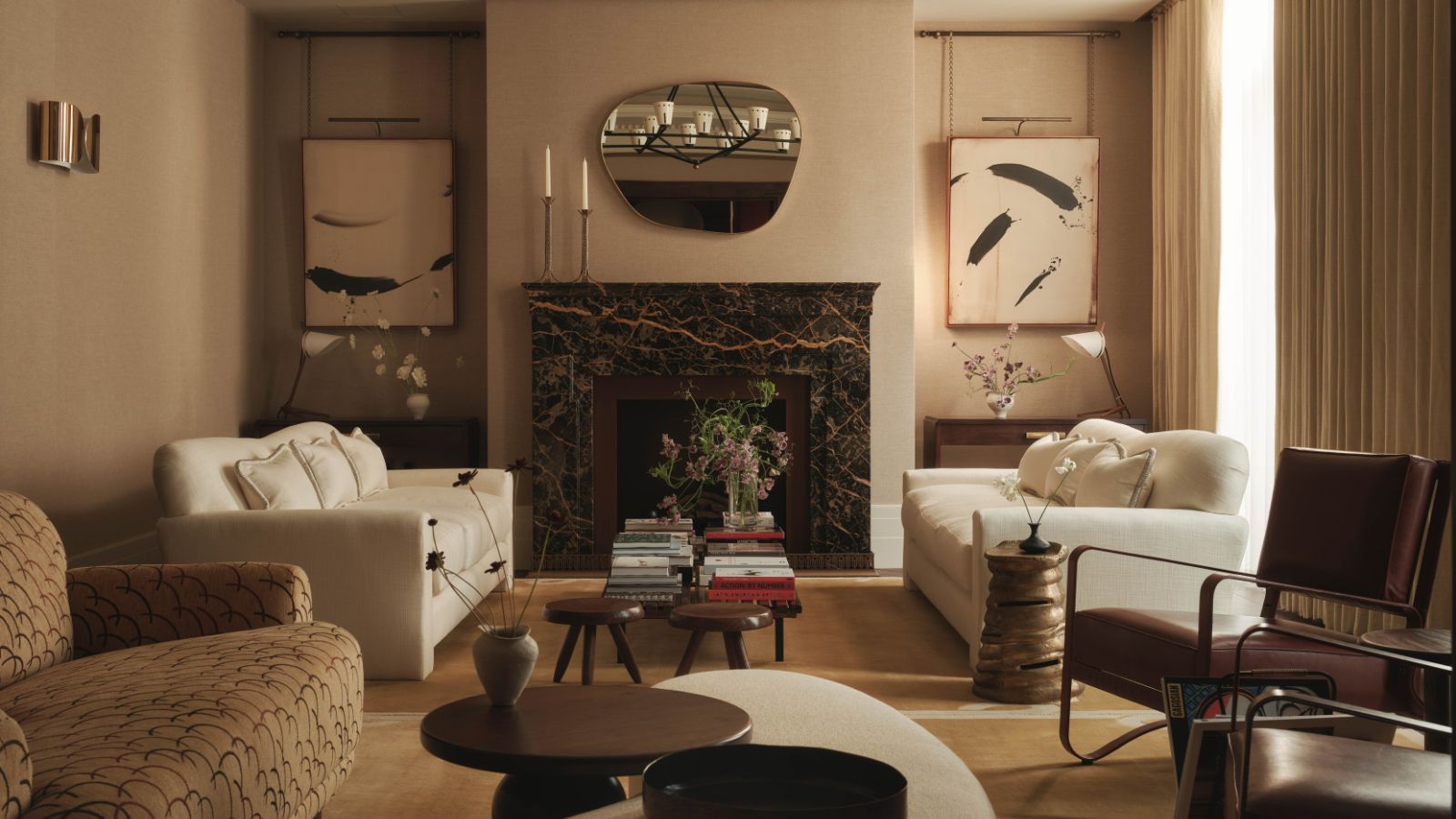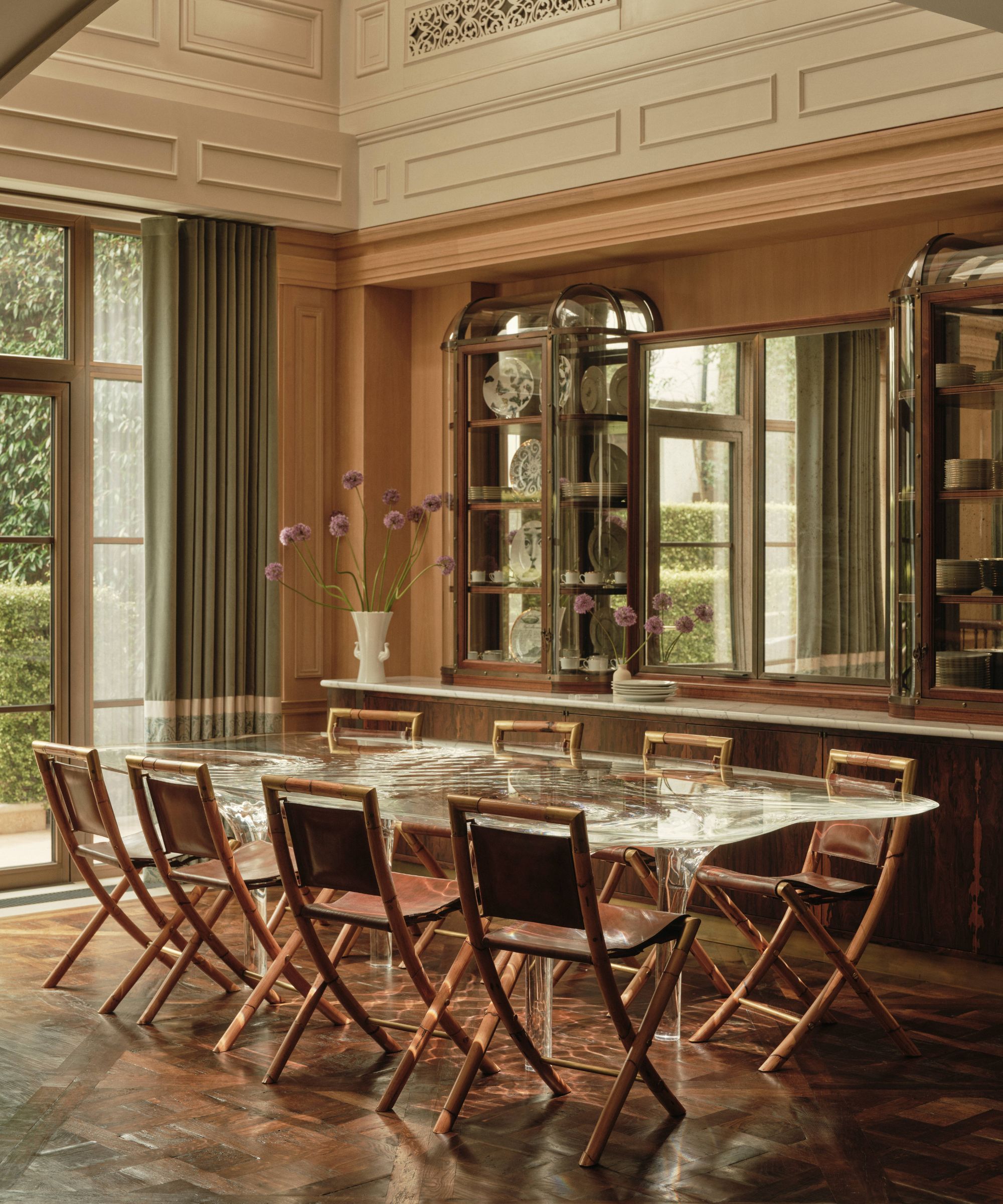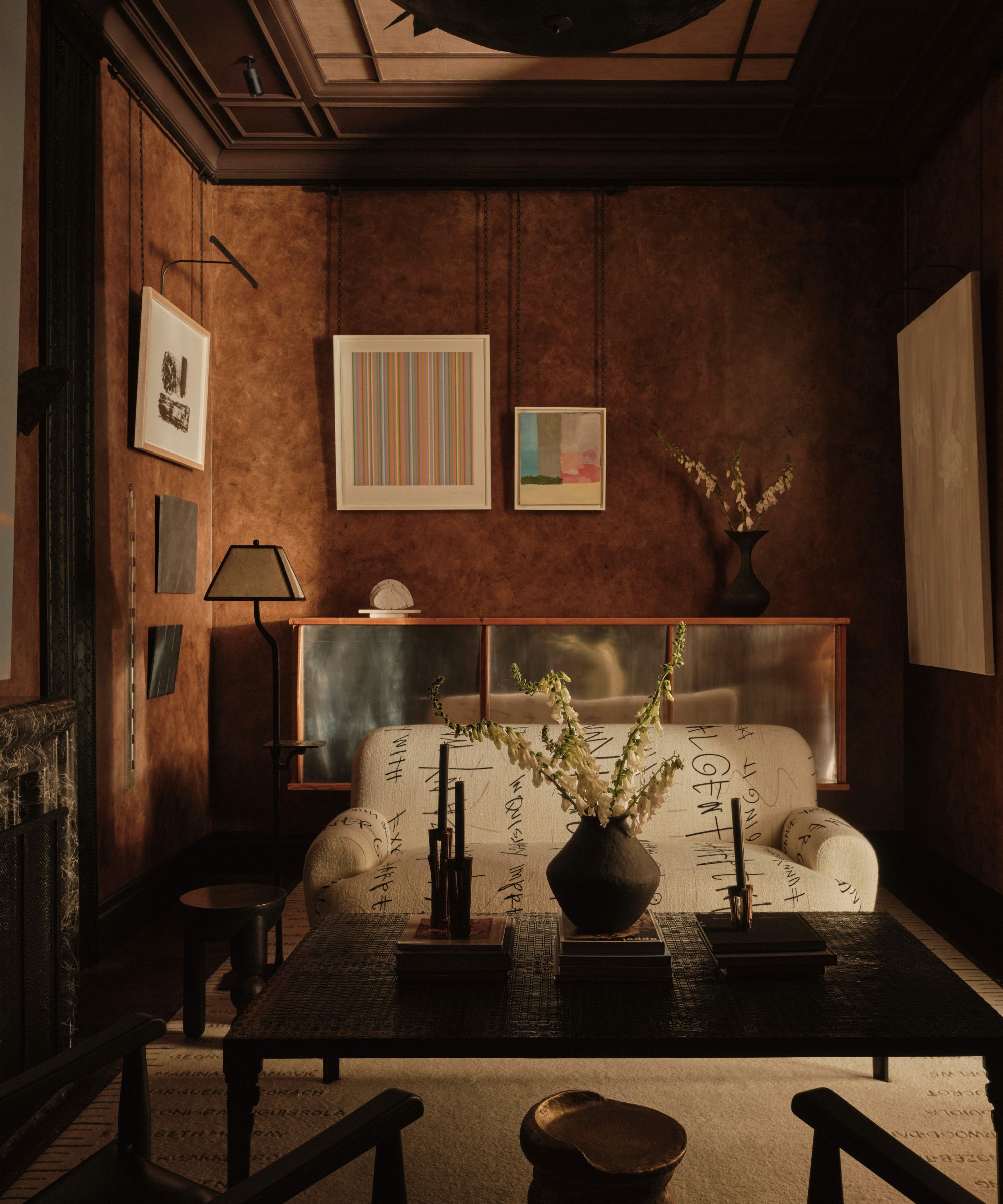Designer Brigitta Spinocchia Freund on How She Effortlessly Blends Old and New – She Says It's Not About Following Trends but Creating a Story
Brigitta Spinocchia Freund's signature style is all about layering; her projects effortlessly blend styles and eras to create rooms that feel totally unique. Here she shares her top tips for how she achieves this characterful aesthetic


The trickiest styles to replicate are often the ones that aren't actually a 'style' at all. The aesthetics that blend so many looks and eras that you can't pinpoint what the style actually is – sometimes they can't even be easily described. And that's exactly the 'style' of iconic British interior designer Brigitta Spinocchia Freund.
Her projects are layered, effortlessly mixing old with new, high with low, to create spaces rich in depth and character. It's a style that's not meant to be copied, because its uniqueness is what makes it so interesting. However, that doesn't mean lessons can't be drawn from her transitional style spaces to inspire your own creativity.
We recently took a tour of her London home, which is, of course, the epitome of her layered, luxurious style, and learned more about Brigitta's key tips for balancing old and new to create spaces that feel as interesting and intriguing as her own.
'In the end, a home that balances old and new isn’t about trends or contrasts – it’s about creating a layered story,' explains Brigitta founder of Spinocchia Freund. 'Architecture provides the framework, craftsmanship brings depth, and thoughtful curation weaves emotion through every detail. It’s this interplay of past and present – permanence and possibility – that makes a space not only beautiful but truly memorable.'
Let the Architecture Lead the Story

Every home has its own inherent character – a spirit shaped by its proportions, structure, and past. The first step is always to listen to the architecture – how the space wants to flow, how it should feel, and how it will support the people who live there.
Respecting and restoring key architectural details grounds a design in authenticity. That might mean reinstating a stone staircase, revealing original moldings, or creating new paneling that honors the building’s history. These architectural gestures become the permanent soul of a home – timeless anchors that allow contemporary layers to feel at ease rather than imposed.
Brigitta's top tips: Layering can create a rich effect, so within a more modern space, consider using several tones of one color. This can be achieved simply with paint by adding a dado-height detail or breaking the wall with a darker tone above for a cozier atmosphere. Experiment with multiple shades of white across walls, timber, and soft furnishings to add depth.
Design expertise in your inbox – from inspiring decorating ideas and beautiful celebrity homes to practical gardening advice and shopping round-ups.
Mix Eras But Always Curate With Intention

Curation is the art of composition – the process of finding pieces that resonate with the design narrative and assembling them into environments that are both visually compelling and purposeful. Each piece we choose carries its own story through material, provenance, design, or craftsmanship. Furniture plays a defining role in shaping how a space feels and is used.
In a recent traditionally proportioned interior, for example, we mixed Ron Arad’s Thick Vac Chair for Moroso with a Brazilian sideboard by Joaquim Tenreiro – layering in contemporary statements from female designers Lara Bohinc and Faye Toogood. This was balanced with pieces of no specific provenance discovered at Les Puces Saint Ouen, the Paris flea markets, and anchored by the client’s own Nakashima dining table and chairs. Every element had its place in conversation with its contemporaries – and together they created a composition that was rich, unexpected, and deeply personal.
I often mix periods and makers in this way – combining collectible design with bespoke commissions to create balance and meaning. Every selection is intentional and contributes to a cohesive whole – and it is precisely this interplay between eras, ideas, and materials that makes the mix so exciting.
Brigitta's top tips: A curated space does not need to be crowded. Clean lines and breathing space allow each object to have presence. Create small vignettes of interesting objects to bring personality to a room – a ceramic, a candle, and a vase of flowers grouped together can form a simple composition that draws the eye.
Revisit the pieces you already own. Recycle or trade what no longer serves you. Focus on buying less and buying well – letting every piece earn its place. Buying less and buying well is at the heart of my design philosophy. Each piece should have a purpose and a place – and when you choose thoughtfully, every object can be enjoyed for longer and gain meaning over time. There is no right or wrong, only what feels true to you. Spend time observing how you live in your home – and allow your surroundings to evolve with you.
Honour Craftsmanship To Always Add Character

Craftsmanship gives a home integrity, depth, and soul – it transforms a room from beautiful to truly meaningful. I seek out and collaborate with exceptional craftspeople whose work embodies centuries of skill and artistry – from cabinetmakers and metalworkers to ceramicists and textile artists.
Many of these collaborations stem from my involvement with organizations such as Sarabande, QEST, Cockpit Arts, and Heritage Crafts – all of whom champion process, material intelligence, and the preservation of skill. Through Collect Open, the initiative of Collect art fair supporting ambitious new work, I often work with artists at the start of their creative journeys. These partnerships infuse interiors with authenticity and character – while supporting the future of craft.
Brigitta's top tips: Artists creating original work are everywhere. Visiting local open studios is an engaging way to discover new pieces. If ceramics appeal, display them thoughtfully – by grouping them on a coffee table or shelf and moving them occasionally to change the rhythm of a room. Adding new accessories can shift the mood instantly – a handwoven throw or embroidered cushion adds texture and warmth as seasons change. Craftsmanship, quality, and intention are key – pieces chosen well endure and become more meaningful with time.
Layer Art and Design

Art and design, in my view, should exist in dialogue – not isolation. A painting can anchor a space, while a mid-century light introduces character and history. Sometimes a room is designed around a single artwork; other times the art punctuates the scheme – adding rhythm and narrative.
For Take a Seat at Harvey Nichols, I explored the chair as an object of meaning rather than utility – placing iconic pieces alongside contemporary works, some sculptural and others ergonomic. This dialogue between eras, forms, and intentions transforms a space from simply designed into deeply expressive. Each piece becomes a visual thread – weaving a larger story.
Brigitta's top tips: Consider how art sits within your home. Move a favorite piece to a new wall and notice how the space changes. Large artwork can fill and balance a blank wall, while smaller, more interesting pieces can enliven forgotten corners or narrow spaces. If an armchair feels tired, swap it for a vintage one in a contrasting color or material to add character. The placement of art and furniture should be thoughtful – creating flow, scale, and rhythm that feel personal and alive.

I am the Head of Interiors at Homes & Gardens. I started off in the world of journalism in fashion and luxury travel and then landed my first interiors role at Real Homes and have been in the world of interior design ever since. Prior to my role at H&G I was the digital editor at Livingetc, from which I took a sabbatical to travel in my self-converted van (not as glamorous as decorating a home, but very satisfying). A year later, and with lots of technical DIY lessons learned I am back to writing and editing, sometimes even from the comfort of my home on wheels.
You must confirm your public display name before commenting
Please logout and then login again, you will then be prompted to enter your display name.